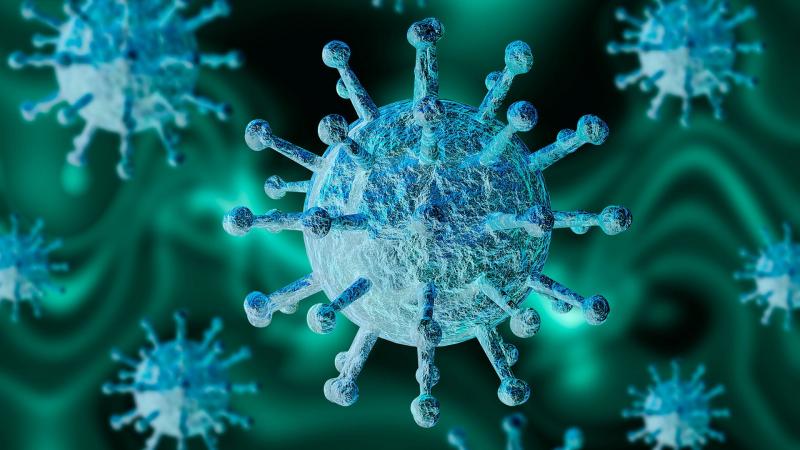Omicron Variant: 10 Things You Should Know
The Omicron variant spreads quickly and easily between people, even if they are vaccinated. Omicron has spread quickly in Eeyou Istchee. There are measures you can take to help contain this surge. If you're infected, stay home, reduce your social contacts, and follow isolation measures. Stay in your house bubble. Learn more about protective measures and tools by clickling on the questions below.
- COVID-19 spreads through tiny droplets of spit that travel through the air when a person coughs, sneezes, or talks.
- These droplets can land in the mouth or nose of people nearby.
- You can also catch COVID-19 if you touch an infected person, by shaking hands for example, and then touching your mouth, nose or eyes.
- The virus moves between people when people move and visit.
- Travel and visiting are strongly discouraged during outbreaks.
- We recommend that you:
- Wear a mask
- Wash your hands often
- Stay 6 metres/2 feet from people who don’t live with you
- Cough or sneeze into your elbow or a tissue
- When a virus moves between people and reproduces in the body, it mutates (changes).
- This creates new variants, which are different versions of the same virus.
- Different variants of COVID-19 cause similar symptoms, but can have slightly different characteristics, and act differently.
- What we know about the Omicron variant:
- The Omicron variant spreads much more easily between people than other variants.
- Omicron is a more contagious variant of COVID-19.
- It produces more virus more quickly in our bodies, compared to other variants.
- This means Omicron spreads more quickly between people.
- Like other variants of COVID-19, Omicron spreads through tiny droplets that travel through the air when an infected person breathes out.
- These droplets can be breathed in by another person nearby. Most people get infected this way.
- It's also possible to catch the Omicron variant (and other COVID-19 variants) from other people when you touch your mouth, nose or eyes after you touch objects or surfaces that could have droplets on them.
- For example:
- If a person with COVID-19 yawns into their hand, and then you shake their hand.
- If you drink out of the same cup/glass as a family member who has COVID-19.
- Double vaccination is less effective against Omicron. But double vaccination still provides an important layer of protection.
- A booster shot increases protection against the Omicron variant.
- Vaccination reduces risks for people who are infected.
- Being vaccinated reduces the risk that a person infected with COVID-19 will get very sick, or experience severe illness, or end up in hospital.
- Being vaccinated also slows down the virus when it is transmitted. This means the virus has less opportunity to mutate when it passes between people.
- Omicron is very contagious. Following isolation measures and precautionary measures, and getting vaccinated are the best tools to protect our families and communities from variants of COVID-19.
For updated information about variants in Quebec, visit: https://www.inspq.qc.ca/covid-19/donnees/variants
- Most people who test positive for COVID-19 are contagious for about 10 days from when their symptoms started. This is why Public Health recommends a minimum of 10 days of medical isolation.
- The contagion period for the COVID-19 virus is 10 days, which is why 10 days of isolation are required for people who are infected, or who are a close contact of a case.
- With the Omicron variant, people may have mild symptoms, or no symptoms. They can still transmit the disease to others.
- The virus is most contagious at the beginning of the incubation period. This is why it's important to act quickly if you're infected, or a close contact, to protect people around you.
- If someone still has symptoms at the end of their 10-day isolation period, they may still be contagious. We ask that they continue their self-isolation for at least 48 hours, until their symptoms improve.
- If someone does not have symptoms but tested positive for COVID-19, the 10-day period of isolation begins on the date of their positive test.
- Some people who have a weaker immune system can be contagious for a longer time.
- For example:
- Transplant patients who take immunosuppressive medication.
- People with severe COVID-19 disease (for example patients who are admitted to the ICU.) They can remain contagious for a longer time.
- Isolating and staying at home while you’re contagious reduces the chance of spreading the virus to people around you.
- Even after the contagious period is over, people should be symptom-free for at least 48 hours before they finish their isolation period.
- The chain of transmission is like dominos falling. If one falls, it will make the next one it touches fall. If you separate the dominos down the line, they won’t fall.
- Contact tracing helps break the chain of transmission by ensuring that people who were in contact with a positive case are isolated and don’t pass it on to others.
- Since you are contagious about 48 hours before you start to feel sick or test positive, it’s possible that people you were with during that time period (like family or friends) will have caught the virus before you even knew you were sick. People can help limit the spread of the virus by informing their contacts and asking them to isolate.
- The Omicron variant spreads very quickly. This is why Public Health asks people to help out by doing their own contact tracing. If you test positive, tell everyone you were with 48 hours before you tested positive. They will need to be tested and to self-isolate as well.
- Symptoms can take up to 10 days to develop after an exposure. This is called the incubation period. It is different than the contagious period. The incubation period is how much time it can take for a small amount of the virus to multiply itself inside a person’s body before they start to get sick, or test positive.
- Even if you test negative on Day 3, you might only start develop symptoms on Day 5, or 6 or 7, and become positive then.
- This is why it’s important to continue isolating, so you don’t have new contacts just as you begin to be infectious to others.
- If you have had contact with a positive case, we recommend a test between Day 3-5, so we can identify an infection early.
- This situation can sometimes lead to long isolation periods for a household.
- For example, if you are a parent or caregiver of someone who tests positive, and you can’t isolate apart, you will need to isolate with them for 10 days, and then isolate another 10 days (because you are a close contact), which means 20 days of isolation total.
- When there are many people in the same house, there can be a chain of infection as the virus passes from one person to another, and that can lead to long isolation periods.
- A person who had mild or moderate COVID-19 is usually considered recovered 10 days after their symptoms started (or after a 1st positive test), as long as they are feeling better for at least 48 hours (2 days) after 10 days of self-isolation.
- When a person is considered to have recovered from COVID-19, this means they are no longer infected with COVID-19, and no longer need to isolate, even if there are other people in their home who are still isolating because they are close contacts (for example, your children or other family members caught the virus after you were infected, and they are still isolating).
- Once you have recovered from an infection, you should still continue to follow precautionary measures (wearing a mask, physical distancing), just like people who have not been infected.
- People in your home should complete their isolation, even after you recover, until the last person in the household is considered recovered (10-14 days of isolation + 48 hours symptom-free).
- Yes, vaccination provides protection against the Omicron variant.
- No vaccine is 100% effective, it provides a thick layer of protection.
- COVID-19 vaccination isn’t as strong against the Omicron variant compared to other variants.
- Vaccinated people are much less likely to develop severe complications from COVID-19 and to be hospitalized.
- What we know about vaccination and the Omicron variant:
- Getting a COVID-19 vaccine teaches your body how to recognize and fight the virus.
- People who have received a vaccine booster dose (after 2 doses) have higher protection if they do become infected.
- Being vaccinated means you're likely to have mild symptoms, or an asymptomatic case of COVID-19.
- Vaccinated people are much less likely to develop severe complications from COVID-19 and be hospitalized.
- People who are vaccinated who do become infected with COVID-19 may not be as contagious as unvaccinated people, and may be contagious for a shorter period than unvaccinated people.
- When more people in a community are vaccinated, this creates a collective layer of protection against the COVID-19 because the virus has less opportunity to spread, and mutate (change) into other variants.
- If more people are vaccinated, the virus has less opportunity to spread and change into other variants.
- Vaccination is an important protective layer, that works best with other protective layers (wearing masks that fit snugly when necessary, reducing social contacts, visits and gatherings, washing hands).
- The protection you get from being vaccinated against COVID-19 declines over time. A booster shot increases that protection, which reduces the chances you'll get very sick, experience severe disease, or be hospitalized.
- We now know that people who have only 2 doses of a COVID-19 vaccine are less protected against the Omicron variant, compared with people who also have a booster shot (after receiving 2 doses). A booster shot increases your body’s ability to fight the virus.
- Every person who chooses to be vaccinated, with a 1st or 2nd dose, or booster shot, will help make a difference to reduce levels of risk in each community. Every person who chooses to get vaccinated is contributing to reduce risk in their community.
- Masks help protect us from breathing in the droplets that spread the COVID-19 virus.
- Masks help to keep us from spreading COVID-19 to others through our own breath.
- Masks should be worn in public indoor spaces and when you can’t keep a distance of 2 metres/6 feet (2 arms’ length) between yourself and people who do not live with you.
- Wearing a mask properly (covering the nose and mouth, with a snug fit on the face) increases protection.
- Medical (procedural) masks provide better protection than cloth masks, if they are available to you.
- If available, wear a medical (procedural) mask and make sure it fully covers your nose and mouth.
- If you're wearing a procedural mask, you should throw it out after you use it. Throw disposable masks into a closed garbage bag after you wear it.
- If you're wearing a cloth mask, you should change it regularly, and wash your mask after you wear it.
- Avoid touching your mask when you wear it. Use the ties or bands to put it on or take it off.
- Wash or sanitize your hands after touching your mask.
Precautionary measures help keep us safe. Precautionary measures still work against the Omicron variant.
- Follow community guidelines for gatherings and travel.
- Stay at home if you are isolating.
- Stick to your household bubble.
- Limit social contacts, and be careful when you are with other people who don’t live with you.
- Check in on family and friends who don't live with you. If they are isolating, offer support (call, Facetime, run errands, drop off plates or groceries).
Get vaccinated
- If you are a youth 12-17: Get your 1st and 2nd dose.
- If you are 18 years and older: Get your 1st and 2nd dose, and get a booster shot if it's been 3 months since your 2nd dose.
- If you are a parent or guardian of a child 5-11: Children are now eligible for their 2nd dose. Children can also get their 1st dose at the CMC.
- If you are 18 years and older, and immunocompromised, or on dialysis: Do your COVID-19 3-dose schedule and get a booster.
- If you are a youth 12-17, and immunocompromised, or on dialysis: Complete your primary COVID-19 vaccine series (3 doses).
- Get vaccinated with 2 doses + a booster dose if you are 18 or older.
- Get vaccinated with 3 doses + a booster dose if you are 18 years and old AND are immunocompromised or on dialysis.
- If you are 12-17, complete your primary COVID-19 vaccine series (2 doses). If you are immunocompromised or on dialysis, a complete series of vaccines is 3 doses.
- Consider getting your children aged 5-11 vaccinated with a 1st dose. The Cree Health Board expects 2nd doses will be available for children in Winter 2022.
Wash your hands
- Wash your hands regularly with soap and hot water for 20 seconds, or use alcohol-based hand sanitizer (70% or more).
- Keep your distance from others.
- Stay at least 6 feet (2 metres) apart from people who do not live with you.
Wear a mask
- Wear a mask that covers your nose and mouth when required.
- Medical masks provide more protection than homemade or cloth masks.
Keep good hygiene
- Sneeze into your elbow.
- Clean high-touch surfaces (phones, light switches, handles) often.
Explore More

What are variants and how can you protect yourself against them?


